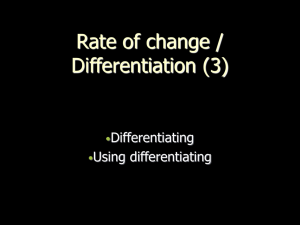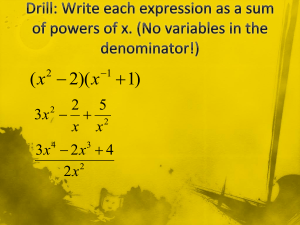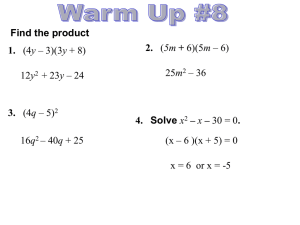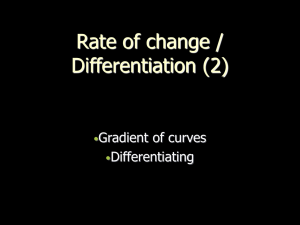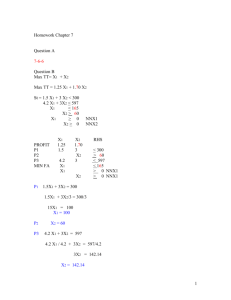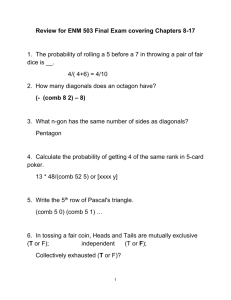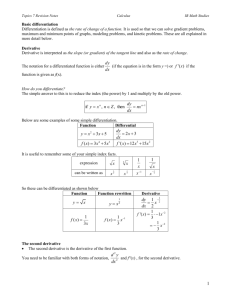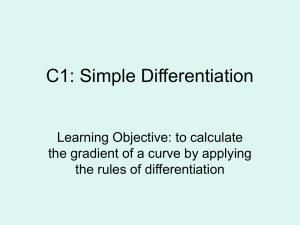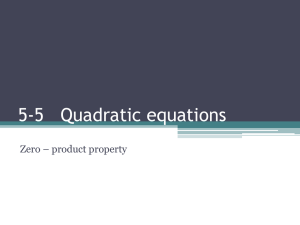Increasing and Decreasing Functions
advertisement
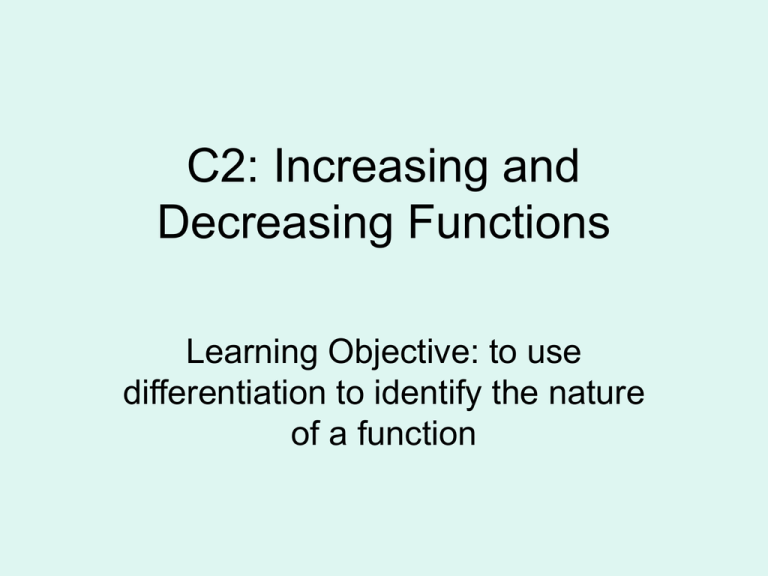
C2: Increasing and Decreasing Functions Learning Objective: to use differentiation to identify the nature of a function Starter: Revise quadratics: Solve 1. x2 + 5x + 6 = 0 2. 2x2 - 5x -3 = 0 3. x2 + 4x -5 > 0 4. x2 + 7x + 12 < 0 The gradient of a curve The gradient of a curve at a point is given by the gradient of the tangent at that point. Look at how the gradient changes as we move along a curve: Increasing Functions: An increasing function is when the gradient is positive at all points on the graph. Example : f(x) = x3 + 24x + 3 f’(x) = 3x2 + 24 As x2 ≥ 0 for all real x, 3x2 + 24 ≥ 0 So f(x) is an increasing function. Decreasing Functions: A decreasing function is when the gradient is negative at all points on the graph. Example : f(x) = x3 + 3x2 – 9x f’(x) = 3x2 + 6x – 9 = 3(x2 + 2x – 3) = 3(x+ 3)(x – 1) f’(x) < 0 when (x + 3)( x – 1) < 0 So f(x) is a decreasing function when -3 < x < 1 This is the graph of a function which is increasing for x < 0, and is decreasing for x > 0. At x = 0 the gradient is zero and the function is said to be stationary.A decreasing function is when the gradient is negative at all points on the graph. Task 1: Find the values of x for which f(x) is an increasing function 1. 2. 3. 4. 5. 3x2 + 8x + 2 4x – 3x2 5 – 8x – 2x2 3 + 3x – 3x2 + x3 x4 + 2x2 Find the values of x for which f(x) is a decreasing function 1. x2 – 9x 2. 2x3 – 3x2 -12x 3. x + 25/x


